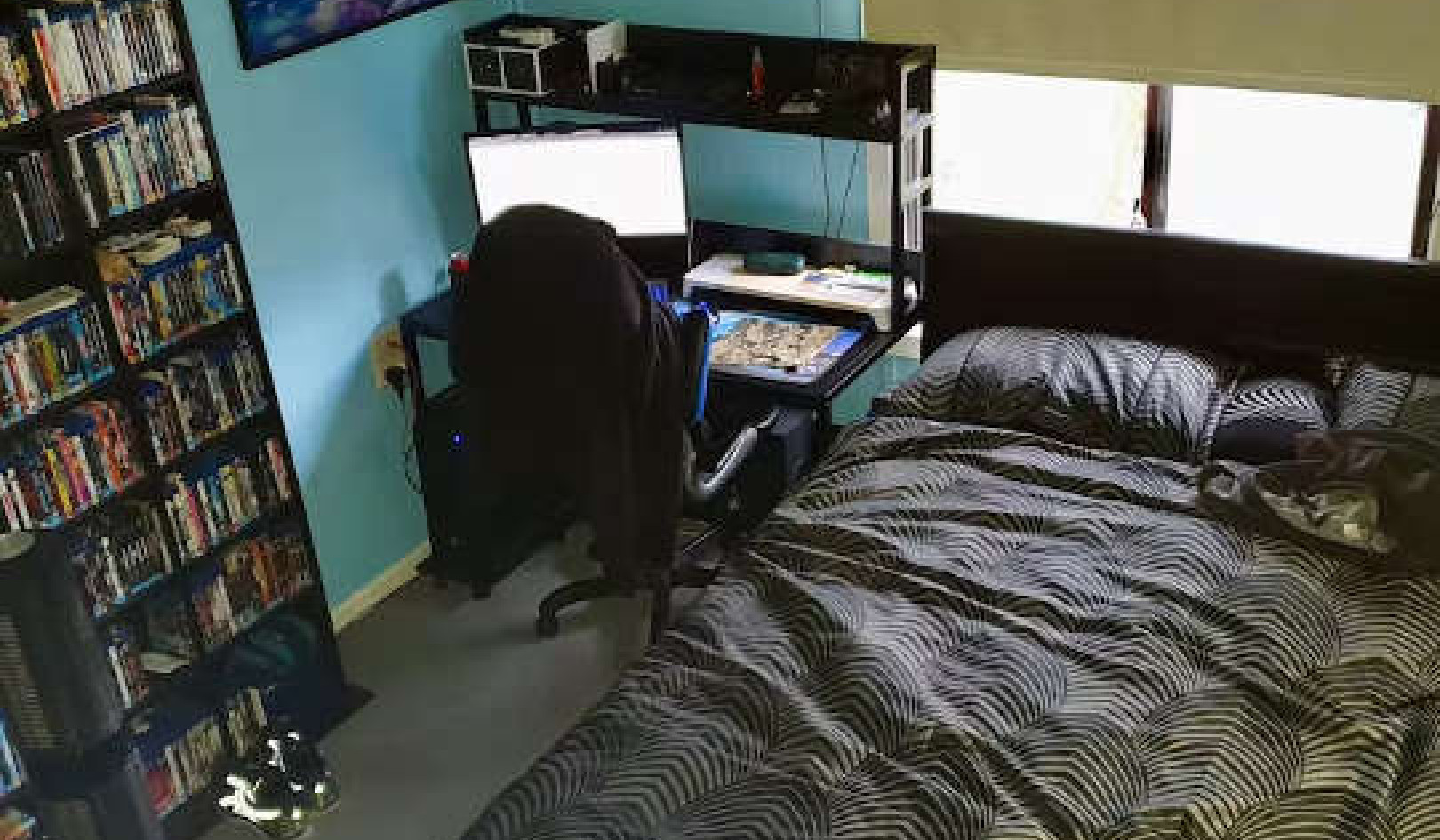
Most “training” of children depends on a willful, specific employment of anxiety inducement. This consciously perpetrated crime is “guilting,” an activity with which we are all involved throughout our lives.
Guilting is built on fear but requires some language development for its inception. Guilting can become fully operative only in a mind split from its primary process. The roots of self-doubt, on which guilting grows, are found in earliest anxiety.
No child could be guilted were his parents or “mothering-ones” not fear ridden. Anxiety, as fear without an object, is induced “unconsciously,” but guilting is not. Guilting is induced very purposefully, though always cloaked under moral wraps. Guilting is employed by parents out of their own sense of guilt and anxiety, but always under the rationale that they are “training” their child.
Parents Fear Social Censure
Most parental “concerns” over their children generate from a fear of social censure. A child not supporting the cultural norms would reflect on the parents’ own social image. The parent’s own family is the strongest judge, and on a gradient come peer groups, neighbors, and then the larger abstractions, society, religion, and so on.
Even concerns over a child’s possible physical injury orient toward fears of social condemnation for not “caring properly.” Actual concern for the well-being of the child takes second place (as in public schools, where administrative fears of liability, public censure, school-board recriminations, taxpayer revolts, parental wrath, and so on, weigh heavier than concern for the child and account for the bulk of the disciplinary regulations and general air of distrust and mutual resentment).
The pressure on parents to maintain a social image gives ample rationale for guilting under the wraps of “moral virtue.” The classical example of the “Jewish mother” illustrates a tendency shared by all, and we recall Jesus’s comment, “a man’s worst enemies are those of his own household.”
Nagging & Ceaseless "No-No's" Can Destroy a Child
Newborns don’t smile, but they learn to rapidly. Frowns, smiles, tones of voice, all link with anxiety, satisfaction of needs, and survival. Judgment plays a dominant role long before any logical development begins. The infant survival system responds pre-verbally to a host of cues. The pre-logical, pre-literate modes of mind function outside language and “conscious” processes. Both infant and child pick up unexpressed negatives and fear.
As soon as there is any infant word play, the parent tends to shift to language-as-communication, long before the infant conceives of language in that sense. Most of the endless barrage of negatives resulting, the ceaseless “no-no’s,” register on the child as anxiety. Parental “reasoning” does not register on the pre-reasoning child. With the growing demand for verbal identification, the child is forced to focus less on primary modes of perceiving and more on verbal interactions. Language slowly enters as a grid intervening between data and response.
A silent swat is worth a thousand words. Our organism is designed to learn by concrete interactions with reality. Animal mothers will bat their young about when necessary, and they learn forthwith. Nothing clears the air so quickly for a locked-in child as a single swift whack on the rear, just as nothing so confuses, fragments, and disturbs a child as the verbal barrage that passes for “reasoning,” or threat.
Don Juan offered strange advice to Carlos concerning a “ruined” child. He recommended sudden, unexplained, and silent thrashings by a stranger every time the child behaved in an unacceptable manner. Don Juan claimed that fright never hurt a child, but that nagging destroyed him or her.
Psychological Battering & Threats of Punishment
 Underlying much of our verbal assault on the young is a masochistic projection of our own frustration. Deep within we know that our words wound far more insidiously than anything else and leave no outward mark. The “battered-child syndrome” of current interest is a physical manifestation arousing our projected indignation. But the psychological equivalent is more prevalent. It just isn’t immediately detectable. The psychologically battered child is observable only in the irrational behavior of each next generation.
Underlying much of our verbal assault on the young is a masochistic projection of our own frustration. Deep within we know that our words wound far more insidiously than anything else and leave no outward mark. The “battered-child syndrome” of current interest is a physical manifestation arousing our projected indignation. But the psychological equivalent is more prevalent. It just isn’t immediately detectable. The psychologically battered child is observable only in the irrational behavior of each next generation.
Parental verbal threat is always unclear in intent to the child. The parents’ own confusion, shifting focus, and muddy intent, create continual contradiction. The child lives in that underlying intent, too, an intent nearly always at variance with the surface “reasonings.”
Threatening the child with future recriminations (this will be done to you and that will be done to you if you don’t do this now) only furthers the flight-fight shift from physical reality to abstract verbal patterns.
The child’s image of self has been described as threefold: good-me; bad-me; and not-me. The young child will often shift “blame” or the actions of “bad-me” over to an imaginary self, a “not-me,” or an imaginary playmate. (“I didn’t do it,” our two-year-old Susan used to say. “My Susie did it.” My Susie was her shadow image, designed to take the edge off our guilting.)
Through verbal play of “as-if” performances, the child attempts to manipulate the reactions of others and ward off guilting. Concealing through playacting that which might otherwise bring anxiety is a defensive step, but also the first step toward lying and an important element in the growing split of the psyche. As the child’s outer compliance grows, his inner centeredness slowly transforms into a reflection on this semantic world of ambiguous and contradictory impingements. Sooner or later he must become what he beholds.
Threat of Social Condemnation Translates into Over-Protection
Generally the parents’ fear of social condemnation for “irresponsibility” is projected as “concern” for the child. Parents seldom distinguish between their own general state of anxiety and a concern for their children’s actual well-being.
This has led us, in our strangely abstracted illusions, to an extreme overprotection of children that has hilarious results. Television is surrendered to so unanimously because of its safe and stable placement of children for long hours. On every hand our society sets up buffers between the child and reality, lest that child be “hurt.” (Never mind what TV does to that psyche, the body is safe and so one’s image-as-parent is safe.)
Every aspect of the child’s life is supervised in one way or another as a security device. Dangers are systematically eliminated. One isn’t allowed fireworks any more but goes to the stadium to watch a fireworks display. (I am not championing fireworks; the example is simply very much apropos.)
Buffering the child against danger throughout his formative years, we then, somewhere around his sixteenth year, put him behind the wheel of two or three hundred horsepower, turn him loose on the freeways, and wonder why the vast majority of automobile accidents occur with young drivers.
The Body Likes to Confront Danger
Don Juan points out that the “body likes danger.” The “body likes to be frightened.” Anyone with children knows that children love to be play-frightened in “let’s pretend” with safe parents. Children play at fright all the time. Young people decisively need to confront danger and seek it in anticultural counterfeits.
Specific fear-with-an-object can serve as an enormous relief valve for our homeostatic forces overworked by anxiety and the constant maneuvering of death avoidance. Witness the strange doomsday exhilaration of wartime; the attraction of horror movies; the panderings of television; the holiday malevolence of public hangings in our recent past; the avid, nonrational, riot-tinged push to witness fire, disaster, tragedy, wreck. The more insular our bufferings to life, the more extreme our vicarious indulgences in violence and death.
The inducement of fear never ceases. As adults we are just getting into the full swing of it. We both inflict and suffer guilt and anxiety on an ever wider basis. All of us are daily accused by every billboard, advertisement, newscast, authority pronouncement, Pentagon alarm, political war cry, or recent horror from the imaginative laboratories of the American Medical Association. We are ignorant, inadequate, unworthy, unnecessary, unlovable, unacceptable, vulnerable to the plunder of the opposition party, vulnerable to the ravages of endless disease, subject to the horrors of hell on death, and we smell bad.
All the needed correctives can be had, of course, by our proper response to the cultural priests dispensing the commodities of salvation.
Guilting Brings On Judgment
Guilting focuses all attention on the cultural context and leaves no place to hide. Guilting brings on judgment of neighbor against neighbor, family member against member, government against government: each dispensing equal executioners periodically to uphold their just decrees, and so on throughout the whole globe.
Culture requires an inordinate amount of energy to maintain itself. (Don Juan claimed that the cultivation of well-being required no more energy than the maintenance of our disease.) Culture is the most jealous of gods. Fear and isolation are held as our natural state, inflicted on us by a hostile universe. “You can’t change human nature,” the Naked Ape proponents chime. Contexts can be changed, however, and all energy must be expended toward that end. Any move toward centering is suspect.
Every breakdown in our buffers to despair is an opportunity for embracing that despair. To be in despair is to be without hope. Don Juan and Jesus live without hope. Hope is futuristic. The whole man lives in the eternal moment of now, and needs nothing more.
Culture is hope. Hope keeps one contextually oriented. Any move toward centering is suspect, since only the eccentric man, off balance and outside himself, is predictable and controllable. Nothing so upsets the bishop as the rumor of a saint in his parish.
Reprinted with permission of the publisher,
Park Street Press, an imprint of Inner Traditions Inc.
©1974, 2014 by Joseph Chilton Pearce. www.innertraditions.com
This article was adapted with permission from Chapter 7 of the book:
Exploring the Crack in the Cosmic Egg: Split Minds and Meta-Realities
by Joseph Chilton Pearce.
 Joseph Chilton Pearce shows that just as we each create our own cosmic egg of reality through cultural conditioning, we also innately create a “crack” in that egg. Ultimately certain shifts in our biological development take place to offset acculturation, leaving an avenue of return to our primary state. He examines the creation of the “egg” itself and ways to discover its inherent cracks to restore wholeness to our minds, release us from our fear of death, and reestablish our ability to create our own realities through imagination and biological transcendence.
Joseph Chilton Pearce shows that just as we each create our own cosmic egg of reality through cultural conditioning, we also innately create a “crack” in that egg. Ultimately certain shifts in our biological development take place to offset acculturation, leaving an avenue of return to our primary state. He examines the creation of the “egg” itself and ways to discover its inherent cracks to restore wholeness to our minds, release us from our fear of death, and reestablish our ability to create our own realities through imagination and biological transcendence.
Click here for more info or to order this book on Amazon.
About the Author
 Joseph Chilton Pearce is the author of several books, including The Crack in the Cosmic Egg, Magical Child, and The Biology of Transcendence. Since the early 1970s, he has been teaching at universities throughout the world about the changing needs of our children and the development of human society. Joe (as he prefers to be called) lives in the Blue Ridge Mountains of Virginia and is on the Board of Advisors for The Monroe Institute, a worldwide organization dedicated to expanding human potential.
Joseph Chilton Pearce is the author of several books, including The Crack in the Cosmic Egg, Magical Child, and The Biology of Transcendence. Since the early 1970s, he has been teaching at universities throughout the world about the changing needs of our children and the development of human society. Joe (as he prefers to be called) lives in the Blue Ridge Mountains of Virginia and is on the Board of Advisors for The Monroe Institute, a worldwide organization dedicated to expanding human potential.



























